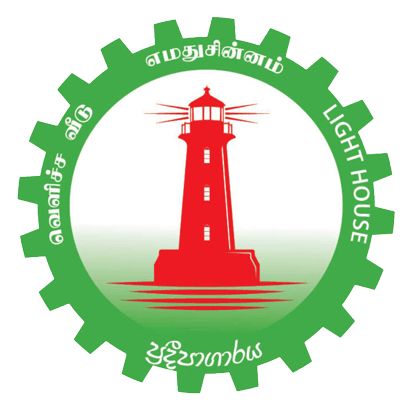The affidavit, dated 11th December 2020, was sworn by Special Agent Merrilee R. Goodwin of the FBI, who has been involved in global terrorism investigations since 1998. The document spans over 70 pages and provides a comprehensive breakdown of the investigation, which includes forensic analysis, social media records, and testimony from witnesses and suspects.
In an extraordinary affidavit submitted to the U.S. District Court for the Central District of California, the United States government, through the Federal Bureau of Investigation (FBI), has definitively identified Zahran Hashim as the mastermind behind the 2019 Easter Sunday attacks in Sri Lanka. The attacks, which took place on 21st April 2019, resulted in the deaths of 268 people, including five American citizens, and injured over 500 others. Despite the magnitude of this atrocity and the detail found in the FBI affidavit, the document has remained largely ignored in Sri Lankan public and political discourse. Instead, many in the country have turned their attention to speculative theories and political posturing, often overlooking this concrete and damning piece of evidence.
The affidavit, dated 11th December 2020, was sworn by Special Agent Merrilee R. Goodwin of the FBI, who has been involved in global terrorism investigations since 1998. The document spans over 70 pages and provides a comprehensive breakdown of the investigation, which includes forensic analysis, social media records, and testimony from witnesses and suspects. It offers a clear narrative of how Zahran Hashim established and led a local ISIS cell in Sri Lanka, officially recognised by ISIS leadership, and how he coordinated a complex, multi-location suicide bombing attack.
The Easter Sunday attacks, targeting three churches and four luxury hotels across Colombo, Negombo, and Batticaloa, were carried out by eight suicide bombers. The targets included St. Anthony’s Shrine, St. Sebastian’s Catholic Church, and Zion Church, as well as the Cinnamon Grand, Shangri-La, Kingsbury, and Taj Samudra hotels. The attack was unprecedented in scale and brutality, claiming lives during a sacred Christian celebration. The FBI affidavit reveals that the attackers were members of a group referred to as “ISIS in Sri Lanka”, led by Zahran, who had pledged allegiance to ISIS and received direct approval from ISIS leadership to operate as an official affiliate.
The affidavit states unambiguously: “Zahran Mohamed Cassim, also known as Zahran Hashim, was the mastermind behind the Easter Attacks and the self-proclaimed leader of ISIS in Sri Lanka.” This assertion is not mere conjecture; it is substantiated by evidence including video footage, communications between Zahran and ISIS leaders, training documentation, and physical evidence from the attack sites and safe houses used by the perpetrators.
ISIS, through its media agency Amaq, publicly claimed responsibility for the attacks on 23rd April 2019. The organisation described the perpetrators as “Islamic State fighters” who targeted “citizens of coalition states and Christians in Sri Lanka.” A video was released showing the attackers, including Zahran, swearing allegiance to then ISIS leader Abu Bakr al-Baghdadi. Zahran, standing unmasked and centrally positioned in the video, led the pledge. This visual confirmation, along with communications intercepted by the FBI, makes it clear that the attacks were not the result of domestic grievance alone but were coordinated as part of ISIS’s global terror strategy.
The FBI affidavit names three individuals in addition to Zahran who were deeply involved in the conspiracy: Mohamed Naufar (NAUFAR), Mohamed Anwar Mohamed Riskan (RISKAN), and Ahamed Milhan Hayathu Mohamed (MILHAN). These individuals have been charged with providing and attempting to provide material support to ISIS, and with receiving military-type training from a designated terrorist organisation. Naufar, who served as the “second emir” of the group, was responsible for propaganda, recruitment, and training. He organised ideological and combat training sessions, attended by prospective suicide bombers and operatives.
The level of detail in the affidavit is remarkable. It outlines how the attackers constructed their improvised explosive devices (IEDs) using commercially available materials such as water gel explosives, urea nitrate, and common detonators. Christmas lights, batteries, and switches were repurposed into fusing systems for the bombs. The devices were packed with ball bearings to maximise lethality. Backpacks were used to conceal the bombs, and CCTV footage from the attack sites confirms the use of these specific containers.
Among the many shocking revelations in the affidavit is the claim that Zahran’s wife detonated a bomb during a police raid following the attacks, killing herself, three children, and three police officers. Furthermore, in a raid at a safe house on 26th April 2019, Zahran’s father and brothers were killed in a shootout and subsequent explosion. These events underscore the depth of the group’s commitment to jihadist ideology and their willingness to die rather than be captured.
In interviews conducted by the FBI, Naufar admitted that he had been warned by Riskan on the morning of the attacks to leave his safe house. He was told that one of the bombers, Mohamed Azaam Mohamed Mubarak, had been arrested and that an operation was underway. Naufar claimed he was unaware of the full extent of the planned attacks, yet the affidavit casts doubt on this, citing his deep involvement in planning and training activities.
The level of planning and operational security maintained by the group was sophisticated. Members used encrypted messaging apps such as Telegram and Threema to communicate. Phones were frequently changed, and participants were instructed not to use real names or disclose personal information during training sessions. These measures suggest a level of coordination far beyond that of an impromptu or isolated domestic terrorist cell.
Social media records obtained from Facebook, Google, and Microsoft further implicate Naufar, Zahran, and Milhan. Posts and private messages show the men expressing admiration for ISIS, discussing jihadist strategies, and distributing propaganda materials. Zahran and Naufar even exchanged official ISIS documents and newsletters, including issues of the al-Naba and Rumiyah publications. One message from Naufar chillingly stated, “The United States is the enemy of Allah,” while others encouraged attacks on churches and Western targets.
The FBI’s findings were based on rigorous forensic examinations, including analysis conducted by the Terrorist Explosive Device Analytical Center (TEDAC). TEDAC confirmed the presence of nitrite ions at the blast sites—compounds which do not naturally occur in the environment and are consistent with the detonation of nitrate-based explosives. This forensic evidence was matched with materials found in the group’s various safe houses.
The FBI deployed personnel to Sri Lanka within hours of the attacks, coordinated with local law enforcement, and assisted in medical evacuations and the repatriation of deceased U.S. citizens. Yet, the results of their exhaustive investigation have not penetrated mainstream political or media narratives in Sri Lanka.
Instead, the public dialogue has been polluted with conspiracies involving political parties, intelligence agencies, and foreign nations. While accountability and transparency are essential in any democratic society, the deliberate neglect of such a pivotal and credible document represents a collective failure. It is a failure not only of government and media but of the entire national consciousness.
This affidavit should have served as a foundational document in the national conversation about the Easter Sunday attacks. It provides names, evidence, motives, and even confessions. It describes in meticulous detail how a domestic terrorist cell linked to an international jihadist organisation carried out one of the most devastating terrorist acts in modern Sri Lankan history. And yet, it remains unread, unreferenced, and largely unknown to the broader public.
As Sri Lanka continues to wrestle with the legacy of the Easter Sunday attacks, it is imperative that this document be brought into the light. Truth must prevail over political theatre and media spectacle. The victims and their families deserve more than speculative theories; they deserve justice based on the facts. The facts are here, buried in an American affidavit that speaks volumes. It is time Sri Lanka started listening.
Let the record show: the United States government has declared the mastermind. The world, and especially Sri Lanka, must now pay attention.
(slguardian.org)


